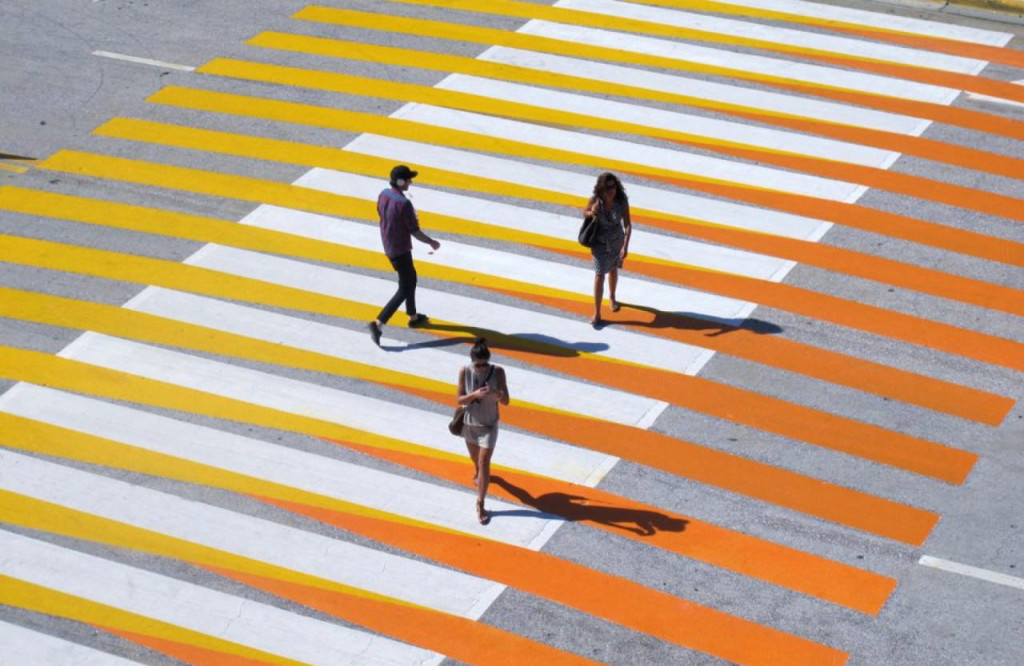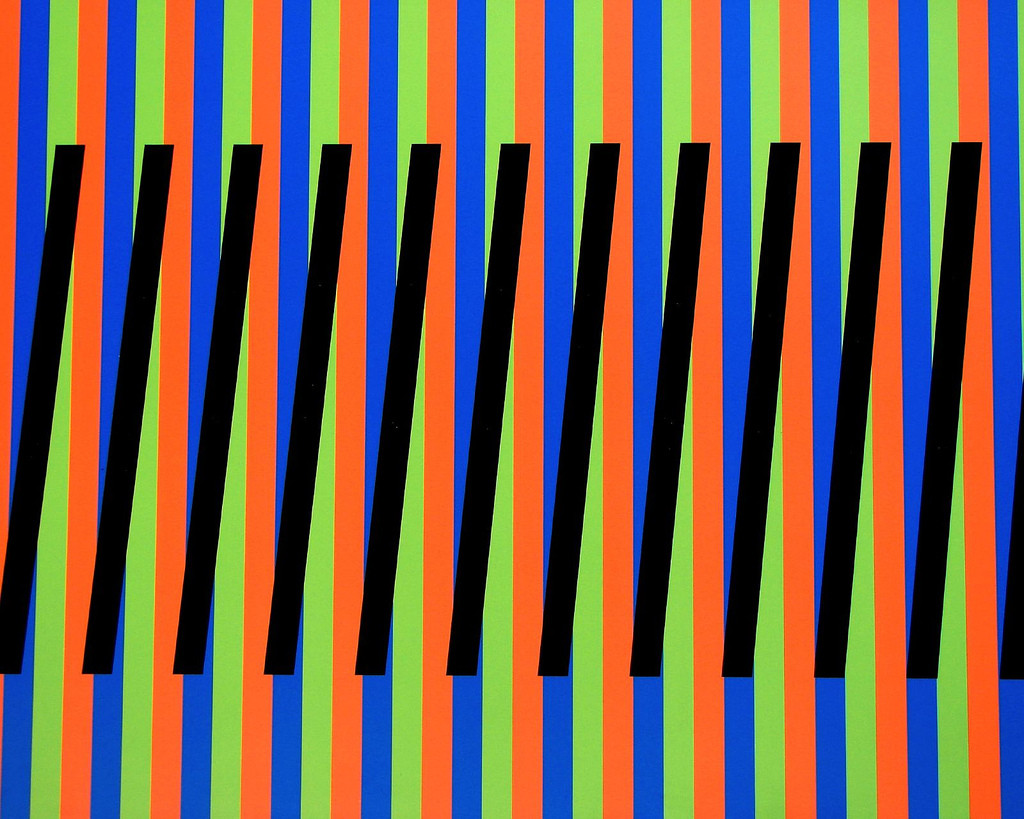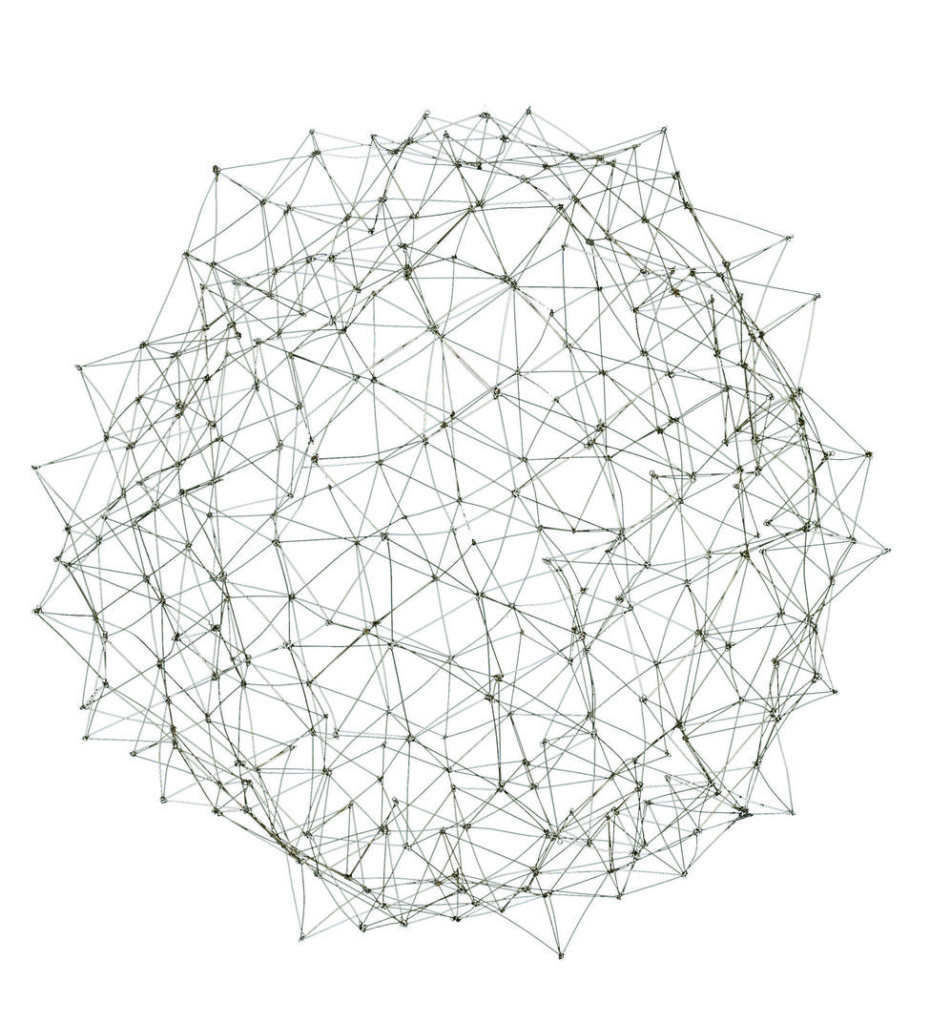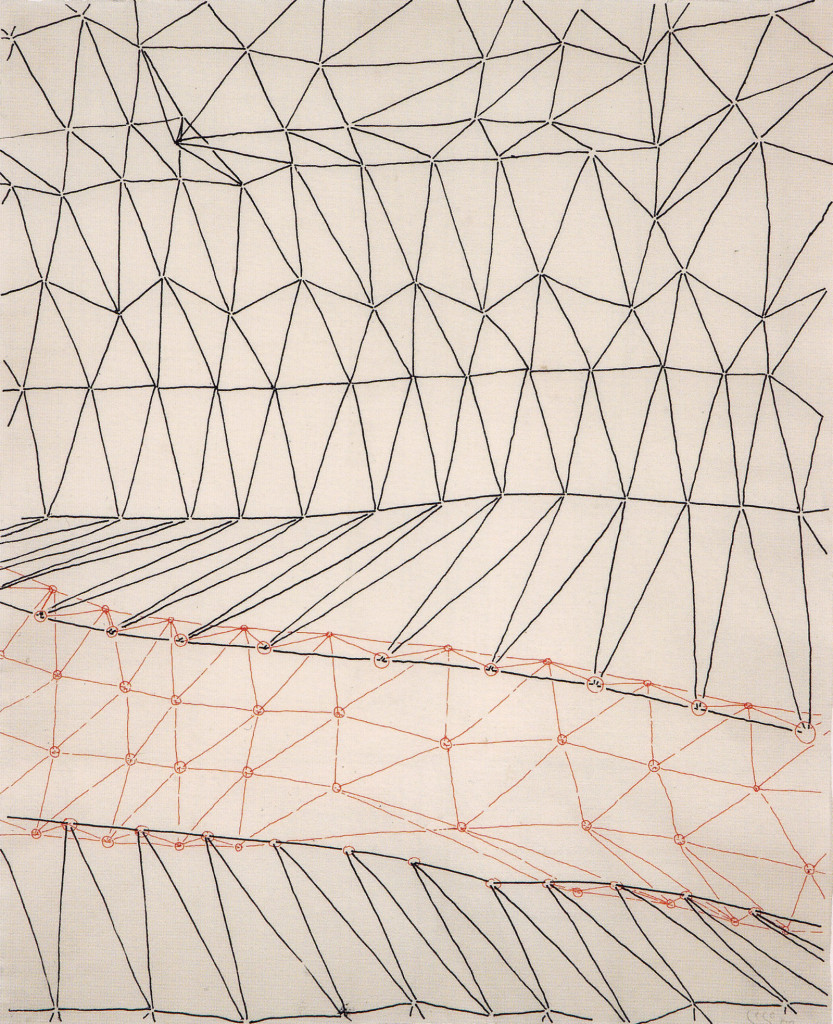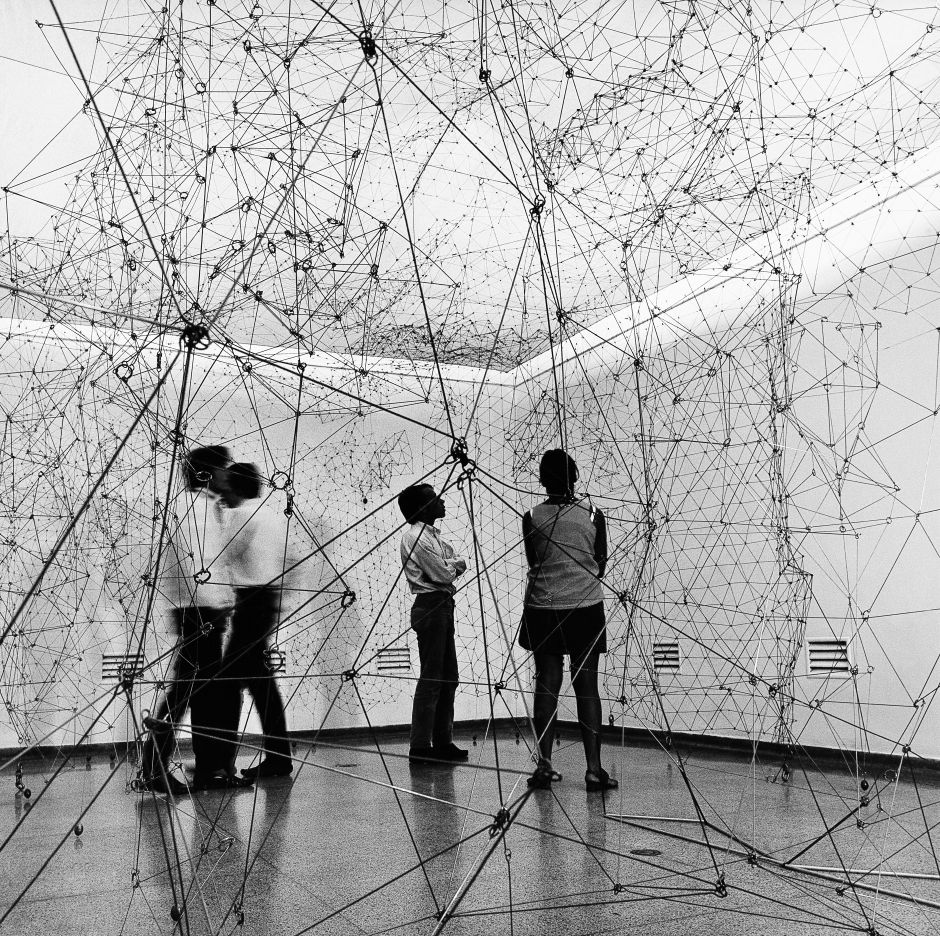- Radical Geometry
- Art Exhibition
- Royal Academy. London, UK
- Website
Soto, Otero, and Cruz-Diez
Jesús Soto and Alejandro Otero (who were both part of “Los Disidentes”), as well as Carlos Cruz-Diez have been three of the most influential Venezuelan artists to emerge from this period. The first two banded together while residing in Paris and alongside other Venezuelan artists subscribed to the “Manifiesto No”, which sought to criticize the state of art academia in their home country while at the same time promoting abstractionism as a viable way forward. Cruz-Diez, who also lived in Paris at the time, became one of the biggest exponents of kinetic and op art worldwide. The common thread in the work of all three artists became the use of movement, instability, and the viewer’s body as creative materials.
Gego
Another highly influential artists during the 1950s was German-born Gego aka Gertrude Goldschmidt. Using wire and found objects, she created ghost-like structures that resembled three dimensional drawings suspended in air. Unlike the aforementioned trio of artists who embraced kinetic art as their preferred style, Gego rejected technology as a component of her works and instead resorted to a more deconstructive approach.



